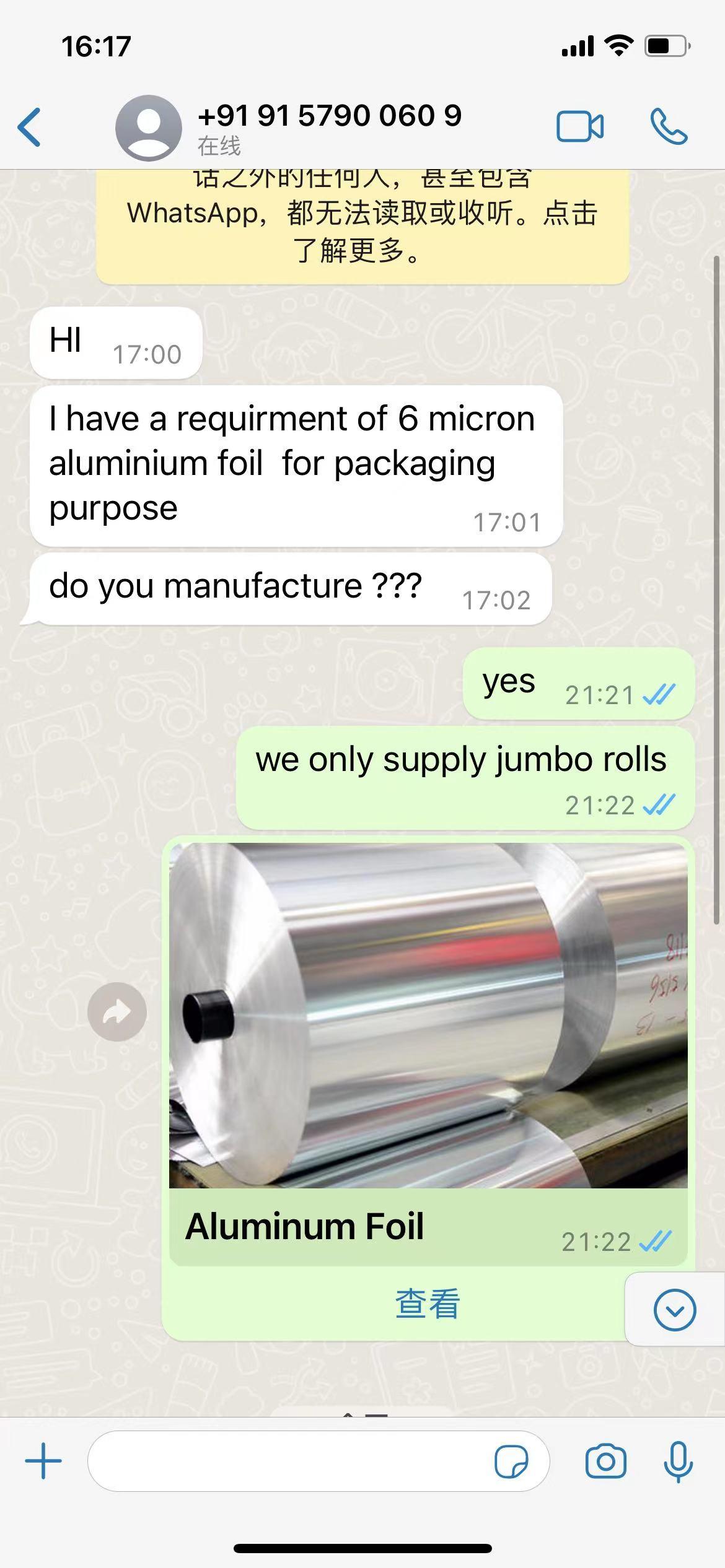In the 1-8 series of aluminum alloy products, except the 1000 series aluminum alloy is pure aluminum alloy, the other 2000 3000 4000 5000 6000 7000 8000 series aluminum alloys contain other metal elements, which improve the material properties of aluminum alloys in one aspect.
In the aluminum material, due to the different uses of the finished aluminum coil, the elements added in the process of these impurity elements have different melting points and different structures. .
1. The influence of copper element on aluminum alloy.
Copper is an important alloying element and has a certain solid solution strengthening effect. In addition, the CuAl2 precipitated by aging has a significant aging strengthening effect. The copper content in the aluminum plate is usually 2.5%-5%, and the strengthening effect is the best when the copper content is 4%-6.8%, so the copper content of most hard aluminum alloys is in this range.
2. The influence of silicon element on aluminum alloy.
Al-Mg2Si alloy system alloy equilibrium phase diagram The maximum solubility of Mg2Si in aluminum in the aluminum-rich part is 1.85%, and the deceleration decreases with the decrease of temperature. In deformed aluminum alloys, the addition of silicon to the aluminum plate is limited to welding materials, and the addition of silicon to aluminum There is also a certain strengthening effect.
3. The influence of magnesium element on aluminum alloy.
The strengthening of magnesium to aluminum is significant, and the tensile strength increases by about 34MPa for every 1% increase in magnesium. If less than 1% manganese is added, the strengthening effect can be added. Therefore, after adding manganese, the magnesium content can be reduced, and at the same time, the hot cracking tendency can be reduced. In addition, manganese can also make the Mg5Al8 compound precipitate evenly, and improve the corrosion resistance and welding performance.

4. The effect of Mn element on aluminum alloy.
The maximum solubility of manganese in solid solution is 1.82%. The strength of the alloy increases continuously with the increase of solubility, and the elongation reaches the maximum when the manganese content is 0.8%. Al-Mn alloy is long and short age hardening alloy, that is, it cannot be strengthened by heat treatment.
5. Effect of Zn element on aluminum alloy.
The solubility of zinc in aluminum is 31.6% in the aluminum-rich part of the equilibrium phase diagram of the Al-Zn alloy system at 275, and its solubility drops to 5.6% at 125. The addition of zinc to aluminum alone has very limited improvement in the strength of the aluminum alloy under the condition of deformation, and at the same time there is a tendency to stress corrosion cracking, which limits its application.
6. Effect of Fe-Si element on aluminum alloy.
Iron in Al-Cu-Mg-Ni-Fe series wrought aluminum alloys, silicon in Al-Mg-Si series wrought aluminum and in Al-Si series electrodes and aluminum-silicon forged alloys are added as alloying elements. In other aluminum alloys, silicon and iron are common impurity elements, which have a significant impact on the properties of the alloy. They mainly exist as FeCl3 and free silicon. When the silicon is larger than the iron, the β-FeSiAl3 (or Fe2Si2Al9) phase is formed, and when the iron is larger than the silicon, the α-Fe2SiAl8 (or Fe3Si2Al12) is formed. When the proportion of iron and silicon is not right, it will cause cracks in the casting, and if the iron content in cast aluminum is too high, the casting will be brittle.
7. The effect of Ti-B elements on aluminum alloys.
Titanium is a commonly used additive element in aluminum alloys, and it is added in the form of Al-Ti or Al-Ti-B master alloy. Titanium and aluminum form TiAl2 phase, which becomes the non-spontaneous core during crystallization, and plays a role in refining the forging structure and weld structure. When the Al-Ti alloy produces a package reaction, the critical content of titanium is about 0.15%, and if there is boron, the deceleration is as small as 0.01%.
